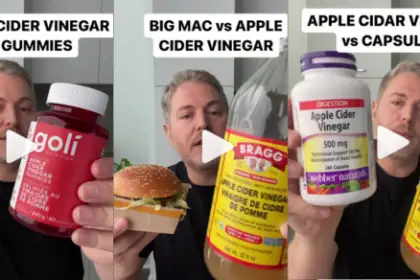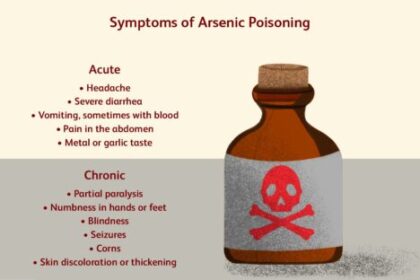Every few years there’s a new diet fad that becomes popular with a best-selling book or talking figure online or television. Normally, for the most part I ignore these as they are not fundamentally sound and foundational to nutritional science, which I am more concerned with with my health training and coaching clients. The most important thing for me is to ensure that everything is done in a healthy manner, in a supportive nature of the body.
Typically speaking, diets cause the body more stress and lead to more cravings and problematic eating after the ‘diet period’ is over. This is why diets are dangerous and why more often than not, they fail. A healthy lifestyle however is a completely different story. Eat healthier over time by making small improvements and adjustments and things simply get better.
The Ketogenic diet isn’t a diet that I am completely sold on as far as a diet, and I do not even recommend the ketogenic diet either. However, there is one key difference with the ketogenic diet that creates a strong distinction between this diets and the other diets touted on tv and online. Can you guess what that difference is?
The Main Difference Between The Ketogenic Diet And Other Diets
The ketogenic diet entails eating a fat rich diet in order for your body to become more efficient at burning and metabolizing fat as a whole. It makes sense in theory, but your body needs protein and carbohydrates as well, it needs all three forms of macronutrients as they do different things in the body. This is the first challenge that I have with the ketogenic diet.
It is however helpful in helping the body to burn fat more efficiently, which you can use to your advantage in a strategic way to benefit your body goals.
The ketogenic diet, or “keto diet,” is a high-fat, low-carbohydrate diet that has been shown to help some people lose weight. It involves drastically reducing carbohydrate intake and replacing it with healthy fats. This causes the body to enter a state of ketosis, where it begins to burn fat for energy instead of carbohydrates. Typically, the diet includes foods such as meats, fish, eggs, nuts, butter, oils, and low-carbohydrate vegetables. Dairy products and certain fruits are also allowed in small amounts.
Other diets aren’t as ‘pro-fat’ as the keto diet, they’re more avoidant of fat in fact. The keto diet says “I want to burn fat better, so give my body more fat” while other diets say ‘avoid fat to not get fat’ it’s simply two different approaches.
The Best Part About The Ketogenic Diet
The most effective part about the ketogenic diet is when the body goes into a state of ketosis. What is ketosis you may ask? Ketosis is a state where the body burns one form of fuel more than the other.
Ketosis is a metabolic state in which the body burns fat for energy instead of carbohydrates. This happens when carbohydrate intake is drastically reduced, typically to less than 50 grams per day, causing the liver to produce ketones from the breakdown of fats. These ketones then become the primary source of fuel for the body and brain. The ketogenic diet, or “keto diet,” is specifically designed to induce ketosis in the body, although it can also be induced through fasting or intense exercise. Ketosis can be also used for therapeutic purpose such as for refractory epilepsy, type 2 diabetes etc.
What Causes Your Body To Go into Ketosis?
The body being in a state of ketosis is caused if following the ketogenic diet strictly, which is good because the body then begins to switch from burning carbohydrates (sugar) for energy and begins to set it’s sight on fat, and burn that for energy instead. This can be much more supportive of your overall body and health goals.
Although I wouldn’t recommend the ketogenic diet to any of my coaching clients because I believe the body needs to be metabolically flexible, it is valuable to be in a state of ketosis as it’s a high fat burning state. There are three main ways to enter ketosis and the body can do this in the following ways..
The 3 Ways To Get Your Body in Ketosis (Fat Burning)
- Keto Diet: The most common and effective way to enter ketosis is through the ketogenic diet, which involves drastically reducing carbohydrate intake and increasing fat intake. This causes the body to shift from burning carbohydrates for energy to burning fat for energy, and results in the production of ketones which are made by the liver. This simply entails switching your diet to eating healthy fats from meat, avocado, olive oil and other fat sources and reducing the carbohydrates below the threshold to induce your body into a state where it’s forced to burn fat for energy instead of sugar.
- Fasting is another way to enter ketosis. When you fast, your body will begin to burn stored fat for energy, which can lead to the production of ketones. This is because when carbohydrate stores in the body are depleted, the body will turn to fat stores as an energy source.
- Exercise, specifically high-intensity interval training (HIIT): or endurance exercise can also help you enter ketosis. When you exercise, your body will burn through its carbohydrate stores and will then turn to fat stores as an energy source. This can help increase the production of ketones in the body.
You can tilt the odds in your favor by doing each of the above a bit more often. Once again, I don’t recommend that you go into a full ketogenic diet because the body does need both protein and carbohydrates and you want your body to be able to burn each of these three macronutrients efficiently. This is what’s known as metabolic flexibility.
Metabolic flexibility is important and something we’ll discuss a bit later in this article, but first let me share with you my favorite way to get my body into a state of ketosis.
My Favorite Way To Enter Ketosis
Personally my favorite way to enter ketosis is to simply fast (not eat food) for 12 hours. Once you hit 12 hours your body is in a state of ketosis where it will begin burning fat for energy, anything beyond that without food your body will be burning fat and in a state of ketosis. This is the simplest and most guaranteed way to get into ketosis as well. With the dietary approach it is very difficult to ensure there are no carbohydrates in everything that you eat. With exercise, you may or may not get into ketosis.
It is important to recognize that while you’re fasting your body is in a weakened state so you will not want to do HIIT exercises when your blood sugar levels are lower.
When the body is in a state of ketosis the liver produces what are known as ketones. What are ketones? Ketones are agents produced by the liver to burn fat as energy in an efficient manner.
The Best Biohack For Optimizing The Ketogenic State
In an effort to burn unhealthy fat in an efficient manner I will fast for 12 hours to get into a state of ketosis, then once i’m in a state of ketosis I will take a ketone ester powder from Trubrain. This ketone powder gives my liver even more fuel to burn fat even faster and more efficiently and it works WONDERS.
Some people take ketones while eating food or at any given time because they do feel a boost of energy and it supports fat burning. While this does work to some degree you don’t want to do this too often simply because your body produces ketones on it’s own. So, if your body is producing ketones because you haven’t eaten for 12 or 16 hours, add a scoop of ketones from trubrain (click ot visit) to keep that going and speed things up. Ketones enhance and optimize the mitochondria for energy also.
Click here to visit Trubrain and get some ketones today.
What is Metabolic Flexibility?
Metabolic flexibility refers to the ability of an individual’s metabolism to switch back and forth between different sources of energy, such as carbohydrates, fats and proteins. It also refers to the ability of the body to effectively utilize different types of fuel, depending on the availability. Metabolic flexibility is important for overall health and well-being, as it allows the body to adapt to different energy demands, such as during exercise or fasting.
A person with high metabolic flexibility will have an easier time adjusting to changes in diet and activity level, and will also have a better ability to use fat as an energy source. A person with low metabolic flexibility may struggle to lose weight or may have difficulty adjusting to different types of diets.
A diet that is high in refined carbohydrates and low in fiber, vitamins and minerals can lead to low metabolic flexibility. On the other hand, consuming a diet that is high in fiber, healthy fats and lean protein, and low in refined carbohydrates, can improve metabolic flexibility. Exercise, specifically endurance exercise, high-intensity interval training (HIIT) and weightlifting, can also improve metabolic flexibility.
Recommended Support:
- Ketones from Trubrain: This ketone ester powder is a great aid for supporting the health of your liver and supporting in the efficiency of your body to burn fat as well as support mitochondrial health, giving you more energy and brain support as a byproduct. Click here to visit Trubrain.





